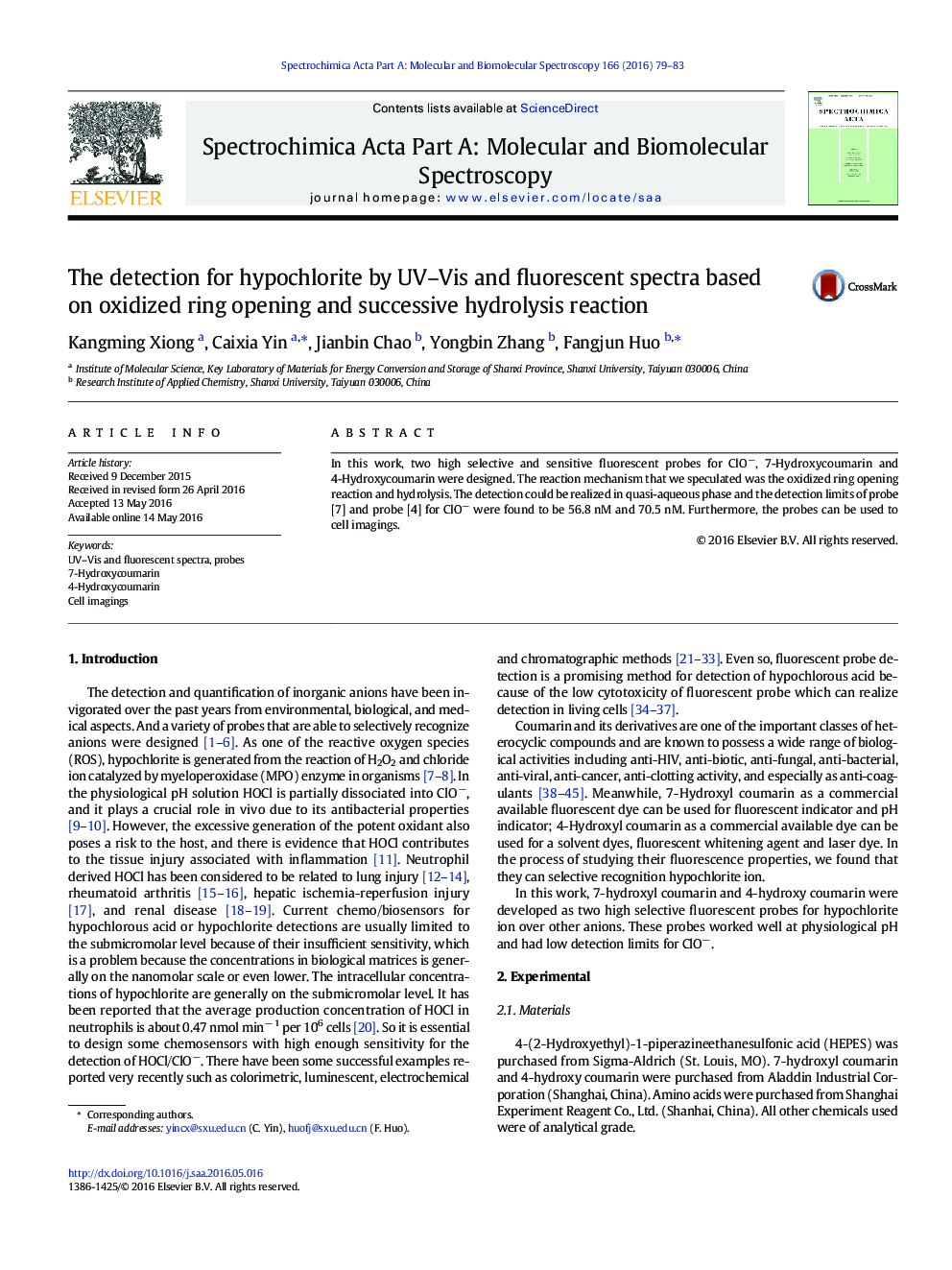| Article ID | Journal | Published Year | Pages | File Type |
|---|---|---|---|---|
| 1230651 | Spectrochimica Acta Part A: Molecular and Biomolecular Spectroscopy | 2016 | 5 Pages |
Abstract
•Two new fluorescent probes for hypochlorite were developed.•The detection could be realized in quasi-aqueous phase with low detection.•The probe could be used to monitor intracellular ClO− in HepG2 cells.
In this work, two high selective and sensitive fluorescent probes for ClO−, 7-Hydroxycoumarin and 4-Hydroxycoumarin were designed. The reaction mechanism that we speculated was the oxidized ring opening reaction and hydrolysis. The detection could be realized in quasi-aqueous phase and the detection limits of probe [7] and probe [4] for ClO− were found to be 56.8 nM and 70.5 nM. Furthermore, the probes can be used to cell imagings.
Graphical abstractFigure optionsDownload full-size imageDownload as PowerPoint slide
Keywords
Related Topics
Physical Sciences and Engineering
Chemistry
Analytical Chemistry
Authors
Kangming Xiong, Caixia Yin, Jianbin Chao, Yongbin Zhang, Fangjun Huo,
